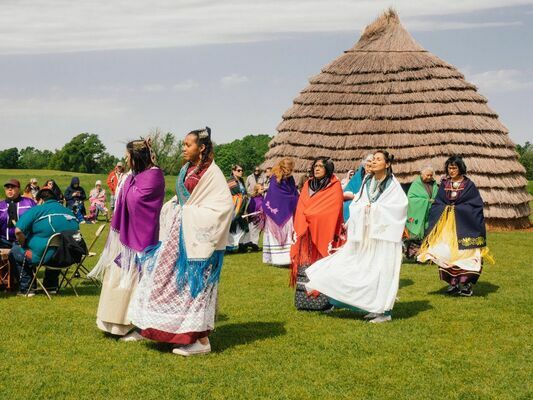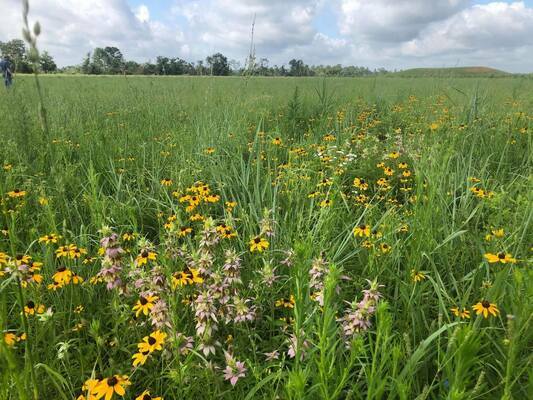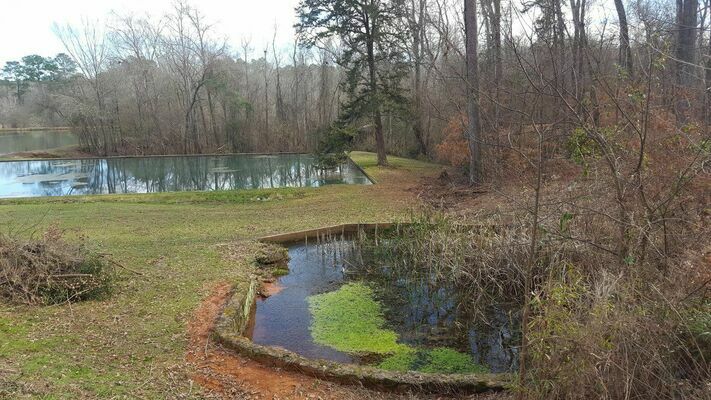Caddo Mounds SHS sows the seeds of history
It often happens that seeds of ideas for Caddo Mounds State Historic Site (CMSHS) sprout into big plans and meaningful partnerships. In the case of our native prairie restoration, these seeds include a desire to return the ecosystem to something the early Caddo might have seen when they stepped out of their grass houses over 1,000 years ago: native grasses and wildflowers, wild turkeys, and life giving natural springs.
“Why is prairie restoration important? Prairie restoration enhances the environment. It increases the abundance of native plants, increases ecological diversity, and therefore creates habitats for native animals and insects. Prairies absorb a lot of rain, reducing erosion and runoff.” Alan Shadow, Manager at USDA-NRCS East Texas Plant Materials Center (ETPMC)
From 1939 to 2007, the acreage where the High Temple Mound at CMSHS stands was maintained as the Texas Forest Service’s Indian Mounds nursery. While this was great for the timber industry, it was devastating for the native prairie. The process of restoring an extensively cultivated field with depleted soil to a native prairie is a long one requiring us to find partners with the knowledge, expertise, and a desire to invest in our project. Alan Shadow, Manager at USDA-NRCS East Texas Plant Materials Center (ETPMC) has been involved in many CMSHS projects helping to preserve the tangible and intangible cultural history of the Caddo people. In 2016, the ETPMC supplied almost three acres of native switchgrass for the construction of our traditional Caddo grass house. Also in 2016, Alan Shadow and his ETPMC team helped us get started with our prairie restoration project. Step 1 required killing off the invasive plant species that dominated the field. Two rounds of planting have taken place. The success of the first season seed was hindered by severe drought and an army caterpillar infestation. In this case, the second time was the charm. What will you see growing in our prairie? A core mix of native prairie grasses, forbs, and legumes developed by the USDA NRCS Plant Materials Program, US Forest Service, and Texas Native Seed. These included but are not limited to Coastal Plains Germplasm little bluestem, Catahoula Pinehill bluestem, ‘Americus’ indiangrass, ‘Kaw’ big bluestem, Neches Germplasm splitbeard bluestem, and ‘Sabine’ Illinois bundleflower. While mowing helps with prairie maintenance, controlled burns will be an essential part of sustaining the healthy prairie we have established.
It is a common misconception that indigenous people lived in their native environments having little impact on those spaces. In reality, most indigenous people tended their homelands, tended the wild. In the case of the Caddo people in what is now east Texas, this care would have included controlled burns, tending wild berries and nut trees, and fostering turkey habitats. The importance of wild turkeys in Caddo culture is why we began investigating a partnership with the National Wild Turkey Federation and local landowners to have wild turkeys re-introduced to CMSHS. Prairie restoration is a key piece of our plan.
Nooh (Caddo word for turkey) are woven through Caddo stories, art, songs, dance, and historical accounts. Núh Ka áwshan (The Turkey Dance) was first documented by French explorer Henri Jotel in 1687. Still performed today, verses of the turkey dance song tell the story of Caddo victories through time.
In thinking about why the early Caddo people made what is now CMSHS their home, it is likely, in part, due to the many natural springs in the area. Faculty, staff, and students at Stephen F. Austin State University’s Arthur Temple College of Forestry and Agriculture are helping to explore the rehabilitation of CMSHS’s delicate natural spring(s). Their expertise will help assess and evaluate every aspect of the spring(s) to develop a comprehensive characterization of the ecological function, groundwater hydrologic cycle and discharge rate, and the basic chemical components of water quality. There are significant archeological questions that CMSHS, as a State Archaeological Landmark, is in a good position to study: What, if any, is the cultural importance of the ancient spring(s)? What is the relationship of springs to the habitation site? Multidisciplinary scientific research by archeologists, hydrologists, horticulturalists, and soil scientists will facilitate study of groundwater interactions within the environment, archeological research regarding natural springs and their habitational significance, and allow for recommendations for rehabilitation and preservation of the spring(s).
While the science of the springs is fascinating, equally important is the presence of water in Caddo stories and traditions. In Snake Woman’s Garden, spring water is used when planting new plants as a way to welcome them to the garden and encourage their growth. The use of spring water for this first watering is part of a Caddo planting tradition passed down to Tracy Newkummet-Burrows from her grandmother and shared with us. Water is central in Caddo stories of underworld creatures and transitions between worlds, the gifting of power, the care and arrival of plants, and more. Like many of us, the Caddo people have a flood myth as a part of their story tradition.
Later this summer and early fall a trip to CMSHS will include a beautiful view or our restored prairie. Future programs will incorporate the natural springs, their ecosystem of plants and animals and their place in Caddo culture. And, as soon as we are clear to gather again, CMSHS will invite the community out to help with the harvesting of switchgrass for the construction of a new Caddo grass house.
Please support The Cherokeean Herald by subscribing today!
You may also like:
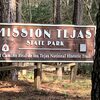
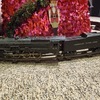




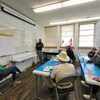
